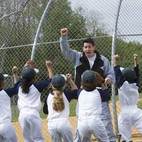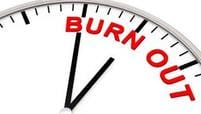|
From Competitive Edge
By: Dr. Alan Goldberg A lot of coaches regularly employ punishment as a "teaching" tool with their athletes and teams. If the team/athlete fails to execute well, makes a lot of mistakes or loses, the coach punishes them with more physically brutal practices, extra trainings and usually extra, long hard conditioning. I've always been puzzled by coaches responding in this "old school" manner. What do they want their athletes to learn from their loss or mistakes? That if you screw up on "my team" there will be hell to pay? That losing is unacceptable? That fear of negative physical consequences will somehow miraculously motivate me and my teammates to perform better and not screw up under pressure? So let's look at exactly what athletes REALLY learn from these kinds of punishment consequences! Click Here to Continue Reading
1 Comment
 From Competitive Edge By: Dr. Alan Goldberg I talk a lot about the many ways that mental toughness techniques can be applied to the training of athletes in any sport in order to help them elevate their performance and reach their potential for excellence. But what kind of person do you end up with when all of these techniques are put into action? What can you expect as the result after all that hard work? Click Here to continue reading  From Competitive Advantage By: Dr. Alan Goldberg As a coach you have an incredible amount of power to influence your athletes in a positive way, both in terms of their sportsmanship and generally as human beings. MOTIVATION is a key element of this process. Doing it wrong – by yelling, intimidation, humiliation, or other ineffective tactics – will only create negativity, fear, and frustration, setting your team up for eventual failure and possibly creating a terrible experience that’ll turn off your athletes from ever pursuing sports again. Doing it RIGHT, however, could make a huge difference in the lives of your athletes and in the overall success of your team, creating a ripple effect of positive results that’ll extend far beyond the sports arena. Continue Reading Here...  From CNN Health By: Danielle Dellorto A blow to the head that at first seems minor and does not result in immediate pain or other symptoms can in fact turn out to be a life-threatening brain injury, experts tell CNN... Continue reading here From Competitive Advantage
By: Dr. Alan Goldberg If we were to peer inside an athlete’s mind while he was in the middle of a great game, we would consistently find a number of predictable mental elements present. The presence of these mental components creates the special INTERNAL ENVIRONMENT within the athlete that enables the peak performance to happen, fuels the athlete’s motivation, and keeps him involved in the sport over the long haul... Continue Reading Here  From VeryWell Blog By: Brett Sears One important component of working with your physical therapist after an ACL injury or surgery is to develop strategies to help prevent future ACL tears. Some of these strategies include maintaining appropriate strength in your leg muscles and maintaining good balance and awareness of your body position. Another way to help prevent injury to your ACL is to learn how to jump and land properly. If you are not taking off and landing properly when hopping and jumping, you may be putting your knees under excessive stress and strain, and this may ultimately injure your ACL in your knee... Click Here to Read More  From the Association for Applied Sport Psychology Blog By: Ryan Hedstrom Coaching is one of those professions where passion for the job is a key ingredient. However, over time the ups and downs of the season can make us question that passion. While this is normal, fluctuations in these feelings can manifest into the larger problem of coaching burnout... Click Here to read more |
Media/LinksThis page is dedicated to sharing links to videos or other articles that I find that could be useful to those reading this website. Archives
March 2018
Categories
All
|

 RSS Feed
RSS Feed